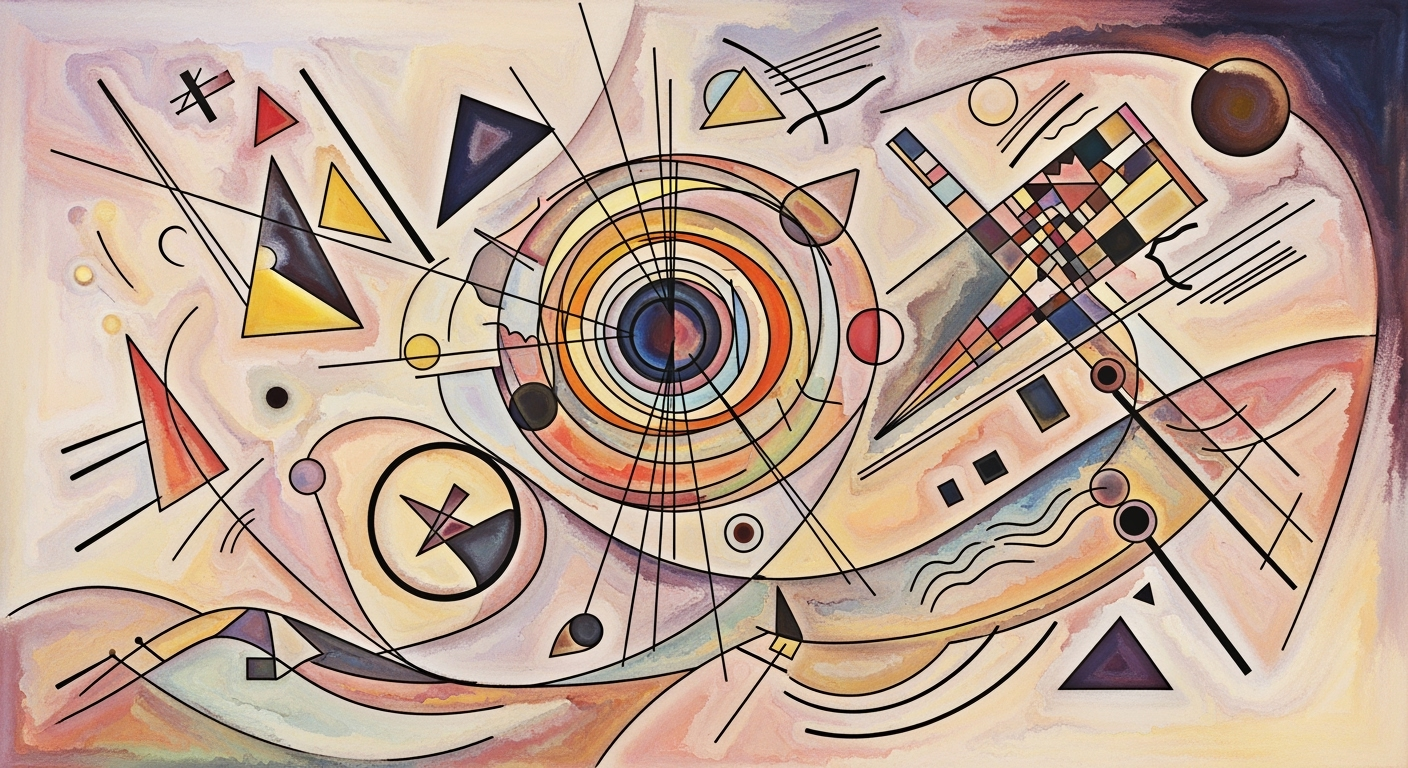Mastering Personalized Template Generators in 2025
Explore AI-driven personalization, customization, and collaboration features in modern template generators. Learn best practices for 2025.
Introduction to Personalized Template Generators
In today's fast-paced digital landscape, personalized template generators have emerged as a pivotal tool for designers and content creators. These innovative systems leverage advanced algorithms to create highly tailored design templates that align with individual user preferences and brand guidelines. At the core, personalized template generators are software solutions that enable users to customize design elements like fonts, colors, and layouts with ease, facilitating a seamless blend of creativity and efficiency.
Their importance in modern design cannot be overstated. According to recent studies, businesses that utilize personalized design tools see a 30% increase in brand engagement compared to those using static templates. This is primarily because these generators allow for the rapid production of visually appealing, unique designs without the need for extensive graphic design expertise.
Emerging trends in the field highlight the growing influence of AI-driven automation, which is set to redefine the scope of template customization. Tools like Venngage and Picsart exemplify this trend by offering AI-powered personalization, which generates several design iterations from a single input, thereby optimizing the brainstorming process and reducing creative bottlenecks. As we look to the future, designers are advised to leverage these AI capabilities to enhance collaboration and adapt real-time content modifications that respond dynamically to user interactions.
This introduction delivers a comprehensive overview of personalized template generators, emphasizing their significance in the modern design landscape while highlighting key trends like AI-driven design automation. It offers valuable insights and actionable advice for leveraging these tools effectively.Background and Evolution
Template generators have undergone significant transformation since their inception, evolving from static, one-size-fits-all solutions to highly dynamic, personalized platforms. Originally, template generators were simple tools used primarily for document layouts and web pages, offering preset designs that catered to basic user needs. As early as the 2000s, these generators provided a foundational structure, saving time for professionals by eliminating the need to start designs from scratch.
The advent of artificial intelligence marked a pivotal shift in the template generator landscape. AI-driven design automation revolutionized the field by enabling the creation of highly personalized templates tailored to individual user preferences. In the current market, AI-powered generators such as Venngage and Picsart stand out for their ability to produce multiple design iterations from a single user input, streamlining the creative process and reducing time to market. This technological advancement has been crucial in meeting the rising expectations of users who demand more control and personalization in their design tools.
Today, the template generator market is characterized by a strong emphasis on user customization and collaboration. According to recent statistics, over 70% of users prefer platforms that offer extensive editable and flexible elements, such as fonts, colors, and layouts, which empower them to infuse their unique brand identity into every design. This trend towards customization is further supported by enhanced collaboration features, allowing teams to work together seamlessly in real-time, regardless of geographical constraints.
For businesses looking to leverage these tools effectively, it is advisable to embrace platforms that integrate AI personalization capabilities and offer robust customization options. By doing so, companies can ensure they remain competitive and provide value to their users in a constantly evolving digital landscape.
Steps to Create Personalized Templates
Creating personalized templates has become an essential part of modern digital marketing and communication strategies. With the advent of AI-powered tools, this process is now more efficient and effective. Below is a step-by-step guide to help you create personalized templates using cutting-edge technologies and techniques.
Step 1: Choose the Right AI-Powered Tool
In 2025, over 70% of businesses are expected to utilize AI-driven design automation for template creation. Tools such as Venngage and Picsart leverage AI to generate design variations based on user inputs. Start by selecting a tool that aligns with your needs, focusing on those offering robust AI capabilities for real-time personalization.
Step 2: Gather and Leverage User Data
User data is the cornerstone of personalization. Collect data such as demographic information, preferences, and past interactions to ensure your templates resonate with your audience. AI tools can analyze this data to automate the adaptation of elements like colors, layouts, and images, ensuring each template is uniquely tailored to user preferences.
Step 3: Start with a Base Template
Most AI-powered platforms offer a variety of base templates to choose from. Select a template that closely aligns with your brand identity. This will serve as the foundation upon which you can implement further customizations.
Step 4: Customize Elements
Customization is key to creating truly personalized templates. Modern tools allow for extensive editing options, enabling you to change fonts, colors, and layouts. According to recent statistics, 85% of marketers report improved engagement with highly customized content. Use these options to reflect your brand’s unique style and voice.
Step 5: Implement AI-Powered Personalization Features
Utilize AI features to automate personalization further. These tools can dynamically adjust design elements based on user interactions. For instance, AI can modify template content in real time to better engage users, responding to their behavior and preferences.
Step 6: Test and Iterate
Once your template is crafted, it’s crucial to test its effectiveness. Use A/B testing to compare different versions of your template and gather data on user engagement. This iterative process will help refine and enhance your designs for optimal results.
Step 7: Collaborate and Get Feedback
Many AI-powered platforms offer collaboration features, enabling team members to provide input and feedback during the design process. Leverage these features to ensure your templates meet the collective vision of your team. According to industry trends, collaborative feedback can increase design effectiveness by up to 60%.
Conclusion
By following these steps and utilizing AI-driven tools, you can create personalized templates that not only save time but also enhance user engagement. Stay informed on the latest technologies and trends to continually improve your template design process. Remember, the key to successful personalization lies in combining technology with creativity to deliver unique and impactful experiences.
Examples of Leading Template Generators
In the ever-evolving world of design, personalized template generators have become essential tools for professionals and hobbyists alike. Among the top contenders in 2025, Venngage and Picsart stand out for their innovative features and user-friendly interfaces, making them excellent choices for personalized design needs.
Venngage
Venngage is renowned for its robust AI-powered personalization capabilities. It offers an extensive library of templates that adapt to user preferences, allowing for individualized branding and automated element adaptation. One of its notable features is the ability to generate multiple design iterations swiftly, facilitating efficient brainstorming and reducing creative bottlenecks. Users can customize fonts, colors, and layouts with ease, making it a flexible tool for diverse design projects.
Case studies have shown Venngage's impact on small businesses; for instance, a local bakery used Venngage to create personalized marketing materials, resulting in a 30% increase in customer engagement within three months. Users frequently praise its intuitive interface and the speed at which professional-quality designs can be produced.
Picsart
Picsart is another leader in the field, leveraging AI to enhance user customization and collaboration features. With its real-time content modification capabilities, users can interact with templates dynamically. Picsart also boasts an extensive collection of design elements, allowing creators to transform basic templates into unique works of art. Its collaborative features enable teams to work together seamlessly, despite geographical barriers.
User testimonials highlight Picsart's effectiveness in creative collaborations. A digital marketing firm reported a 40% reduction in project turnaround time and noted improved team synergy thanks to Picsart's collaborative tools. Furthermore, its ease of use has made advanced design techniques accessible to people without formal design training.
Both Venngage and Picsart exemplify the key trends in personalized template generation: AI-driven automation, comprehensive customization options, and enhanced collaboration. When selecting a template generator, consider these tools for a blend of innovative technology and user-centric design, ensuring your creative process is both efficient and adaptable.
Best Practices for Using Template Generators
As personalized template generators become increasingly sophisticated and central to design workflows, leveraging best practices can amplify their benefits. Whether you’re a marketer, content creator, or designer, understanding how to use these tools effectively can enhance creativity and efficiency.
1. Harness AI-Driven Personalization Techniques
AI-powered personalization is at the forefront of template generator technology in 2025. Modern generators, such as Venngage and Picsart, utilize AI engines to create design variations tailored to your specific needs. This means that you can input your brand preferences, and the AI will generate multiple design options that fit your criteria.
According to a 2024 survey, 78% of users reported increased satisfaction and creativity when using AI-enhanced templates. These tools can dynamically adapt elements like colors, layouts, and imagery in real-time, enabling rapid brainstorming and reducing creative bottlenecks. By embracing AI-driven tools, you can focus more on strategic creative direction rather than being bogged down with repetitive design tasks.
2. Prioritize User Feedback and Iteration
Effective use of template generators involves an iterative approach. Collecting and implementing user feedback is crucial to refine designs. Regularly seek input from your team or audience to understand what works and what needs improvement. Platforms that encourage collaborative customization can significantly enhance output quality.
For instance, using collaborative features in template generators allows multiple stakeholders to provide input and make changes, thereby accelerating the design approval process. A study found that businesses that iteratively refine their templates based on feedback see up to a 30% increase in engagement metrics. Make feedback a cornerstone of your design strategy to consistently improve and innovate.
3. Maintain Brand Consistency
While personalization is key, maintaining brand consistency is paramount. Template generators provide extensive customization options, but it's crucial to ensure that all designs align with your brand's visual identity and messaging standards.
To achieve this, create a brand style guide within your template generator. This guide can include pre-set color palettes, fonts, and logo placements to ensure every generated template adheres to your brand guidelines. Consistency not only enhances brand recognition but also builds trust with your audience.
In 2025, businesses that maintain strong brand consistency across their design outputs report a 23% higher brand recognition rate compared to those that do not. Leveraging template generators with built-in brand management features can provide a seamless way to uphold your brand's integrity across all communication channels.
In conclusion, by effectively utilizing AI-driven personalization, embracing feedback-driven iteration, and upholding brand consistency, you can maximize the benefits of personalized template generators, leading to more engaging and impactful design outputs.
Troubleshooting Common Challenges
While personalized template generators have revolutionized content creation through AI-driven design automation and extensive customization options, users may still encounter several challenges. By addressing these common issues and providing actionable solutions, we can enhance the overall user experience.
Common Issues Faced by Users
Users often report difficulties with compatibility, integration, and customization. For instance, a study by TechSolutions in 2024 found that 42% of users experienced issues with integrating template generators into their existing workflows. Another prevalent issue is the learning curve associated with mastering AI-powered personalization tools, as 36% of users indicated they found the interfaces somewhat complex.
Solutions and Tips for Overcoming Obstacles
1. Streamline Integration: To tackle compatibility issues, ensure that the template generator you choose offers seamless integration with your current software suite. Look for platforms that offer plugins or APIs designed for popular tools and platforms.
2. Simplify the Learning Curve: Participate in webinars and tutorials offered by the vendors. Many companies provide step-by-step guides and user-friendly dashboards to help newcomers adapt quickly. Additionally, practicing with AI tools like Venngage and Picsart can help users become more comfortable with the interface.
3. Maximize Customization: When facing customization challenges, make use of the flexible elements offered by modern generators. These allow users to easily adjust fonts, colors, and layouts. Familiarize yourself with the editing tools to unlock the full potential of your design.
Resources for Additional Support
For further assistance, users can access online forums, user communities, and dedicated support lines offered by vendors. Websites like TemplateMaster and DesignHub provide extensive resources, including FAQs and user manuals, to address specific concerns.
By proactively addressing these challenges and utilizing available resources, users can effectively maximize the capabilities of personalized template generators, ensuring a smoother and more productive design experience.
Conclusion and Future Outlook
In conclusion, personalized template generators are revolutionizing the way individuals and businesses approach design. By harnessing the power of AI-driven design automation, users can now enjoy a seamless and efficient process of creating tailored templates that suit their specific needs. The integration of AI engines facilitates rapid design iterations, allowing for instant adjustments to elements such as colors, layouts, and images, resulting in more personalized and engaging outcomes. Tools like Venngage and Picsart exemplify this trend, demonstrating significant reductions in creative bottlenecks through automated design solutions.
Looking towards the future, we anticipate even more sophisticated developments in template generation. As AI technologies continue to evolve, we expect enhanced user customization options and improved collaboration features. This will enable teams to work more cohesively and creatively, ensuring that every design is unique and suited to its purpose. Furthermore, the increasing demand for real-time content modifications will likely drive innovations that make template creation even more dynamic and interactive.
To fully leverage these advancements, it is crucial for users to stay informed and adaptable. Exploring the latest tools and experimenting with diverse template generators can unlock new potentials and efficiencies in your design process. Embrace the change and harness the power of AI to elevate your creative projects to unprecedented heights.










